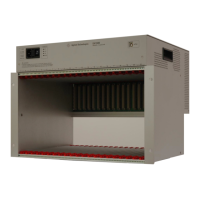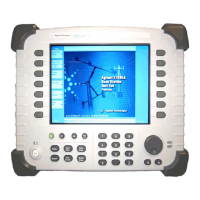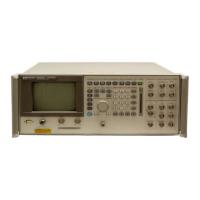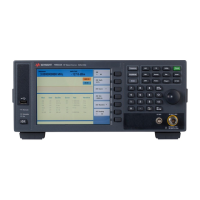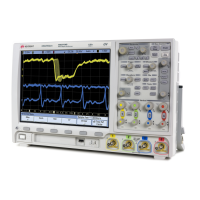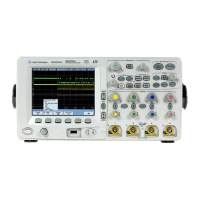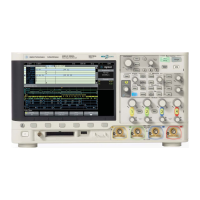116 Chapter3
Making EDGE (with GSM) Measurements
Making the EDGE ORFS Measurement
The general steps in making the measurement are as follows:
• Acquire time record (using either FFT or DTD methods, described
below)
• Synchronize for gating on the carrier - finds 50% and 90% portion of
burst for Spectrum Due to Modulation portion of the test
• Measure power of the carrier
• Compare each offset power to reference to get relative power level
The method of acquiring the time record is dependent on accuracy and
dynamic range. With no pre-ADC filter (infinite bandwidth), the entire
IF bandwidth of the IF signal is hitting the analog to digital converter
(ADC). The ADC gain is set based on the peak level at its input. The
dynamic range (noise floor) of the ADC is dependent on the gain
selected. For the type of signals being measured, the highest energy
within the IF bandwidth is at the carrier. Therefore,the lowest dynamic
range (highest noise floor) of the ADC occurs when the full energy of the
carrier is input to the ADC.
All offsets measured using the FFT method are done with the
instrument tuned such that the carrier is at the center of the IF
bandwidth. Therefore, the dynamic range of the offsets measured using
the FFT method is the same as that for the carrier. The dynamic range
requirement generally increases as the offset frequency increases. If the
dynamic range requirement exceeds what is available by FFT method,
the direct time domain (DTD) method utilizing the pre-ADC filter is
used.
The Direct Time Break Freq key setting is the first offset frequency
which is measured using the DTD method. Its range is determined by
assuring no aliasing occurs on FFT offsets and that the dynamic range
requirements are met.
The FFT method acquires a wideband signal (1.55 MHz) in a flattop
filter. An FFT is performed to get the spectrum of the GSM signal. The
resolution bandwidth filter can now be applied mathematically to the
spectrum at multiple offsets, with an inverse-FFT performed on the
data which passes the filter. In this way, multiple offsets are acquired
from one time record and LO setting. Since the resolution bandwidth
filter is a mathematical formula, it can be any shape and size, and is
perfect. The VSA uses the 5-pole synchronously tuned filter that the
GSM standard specifies.

